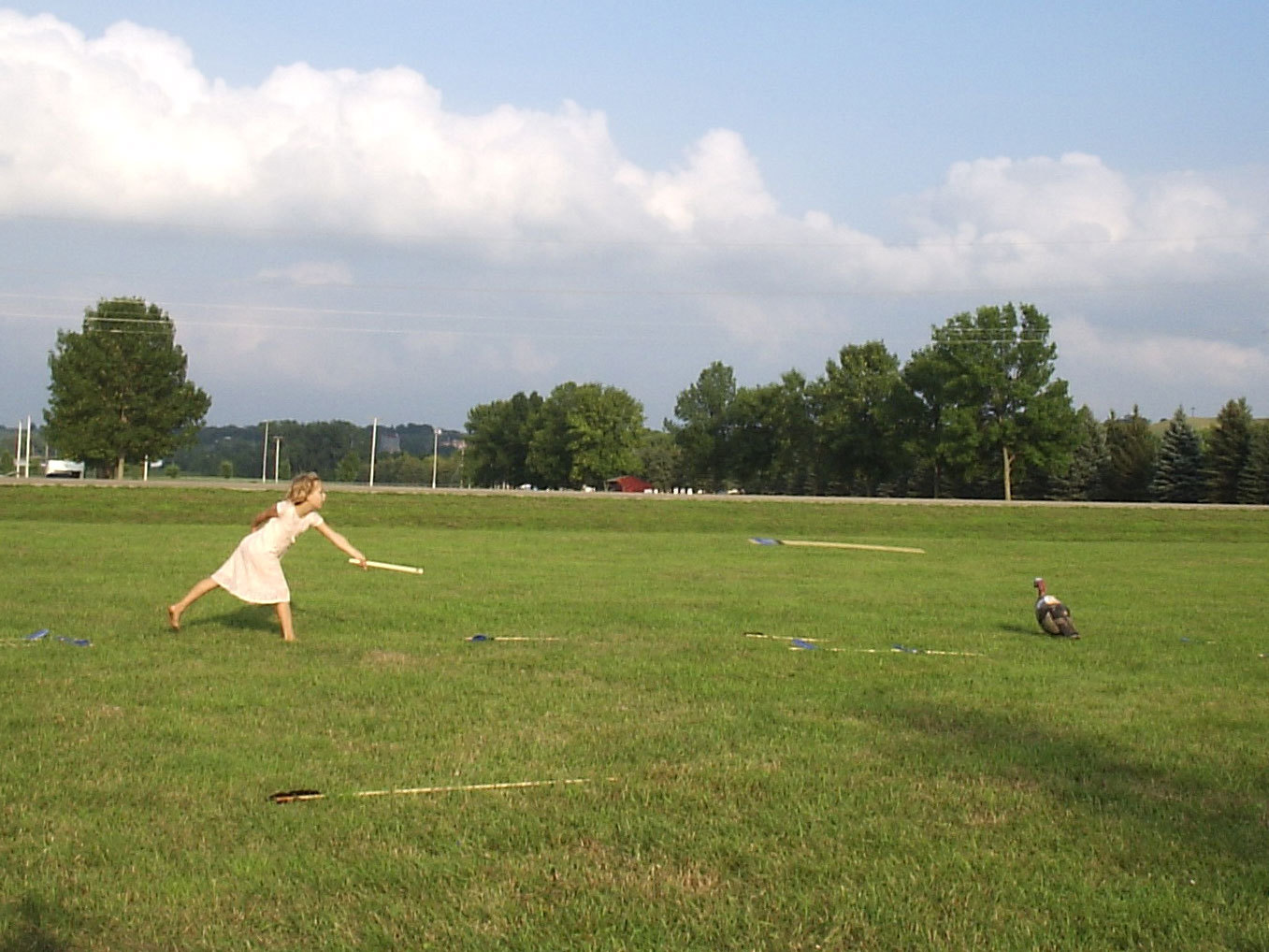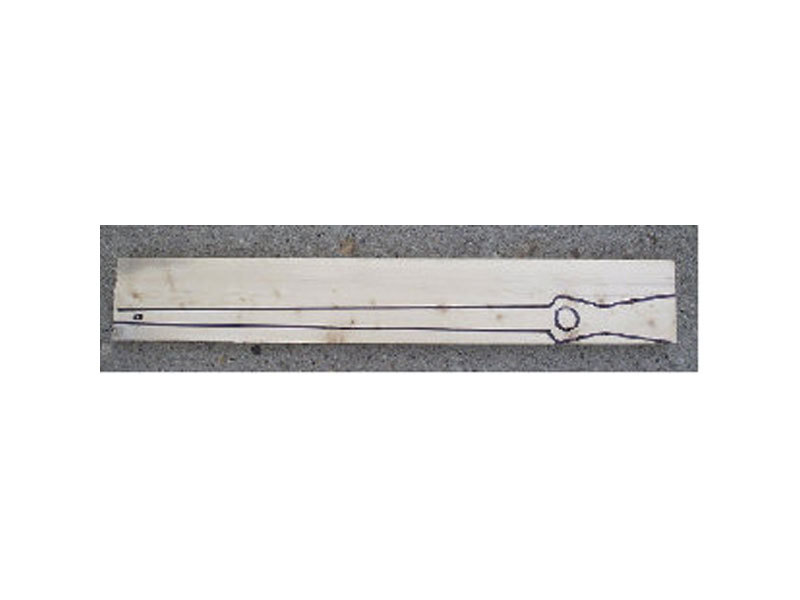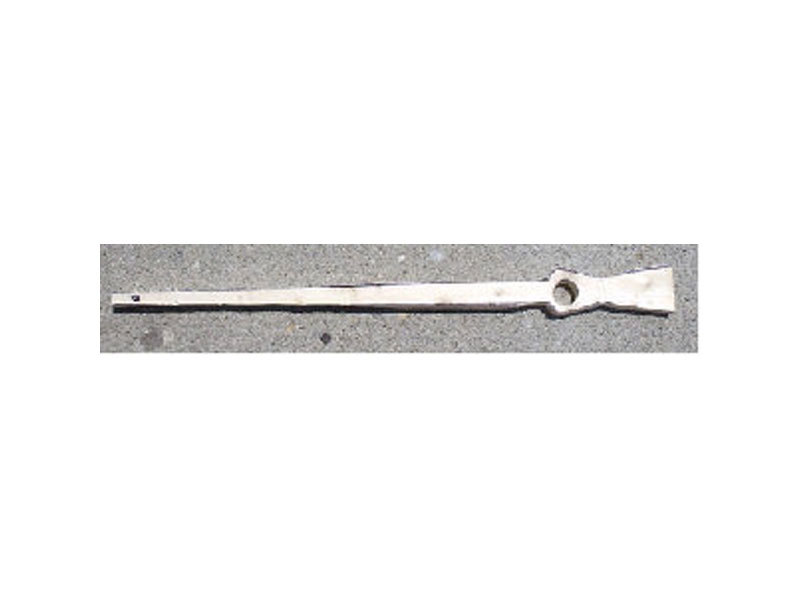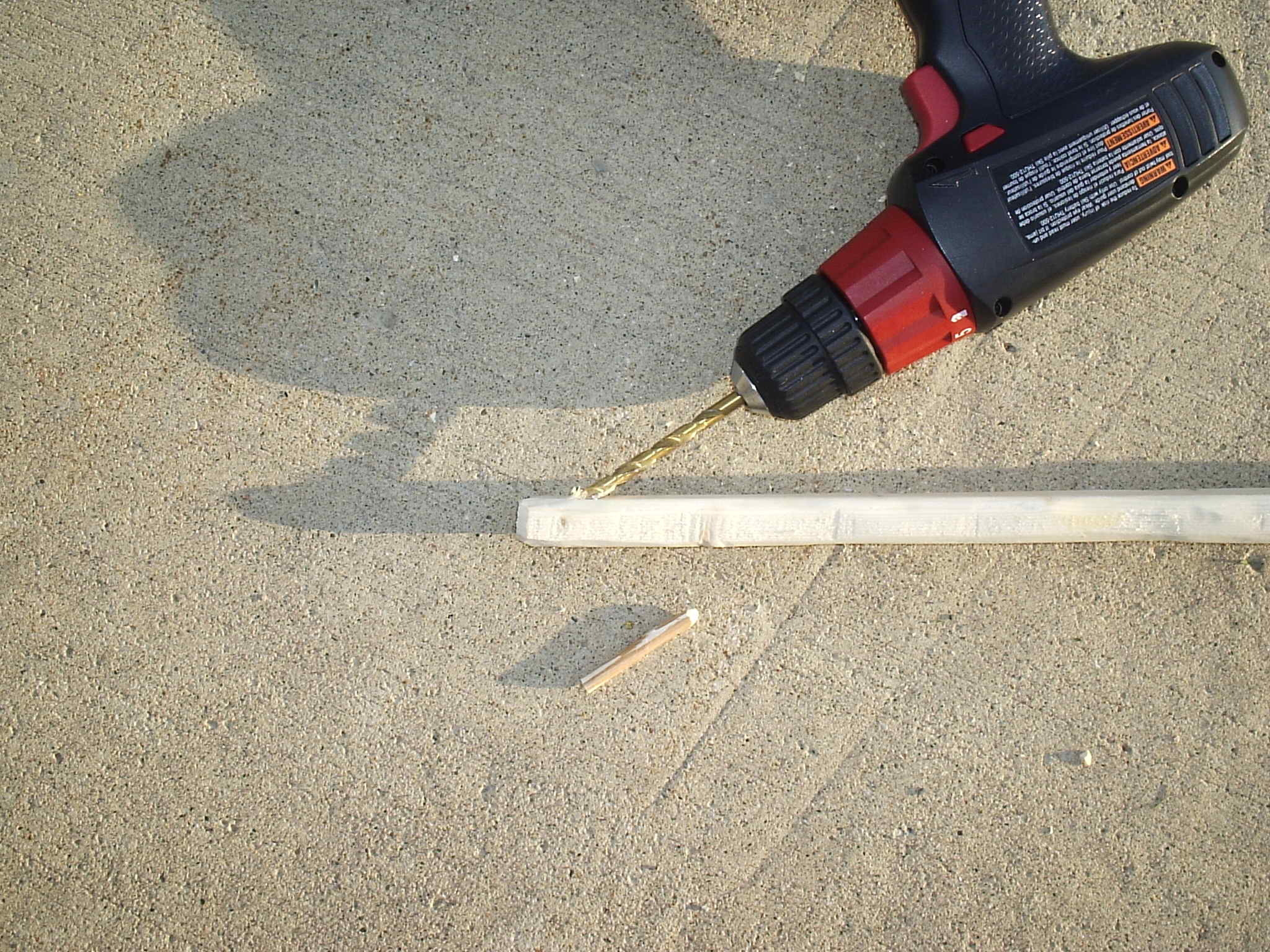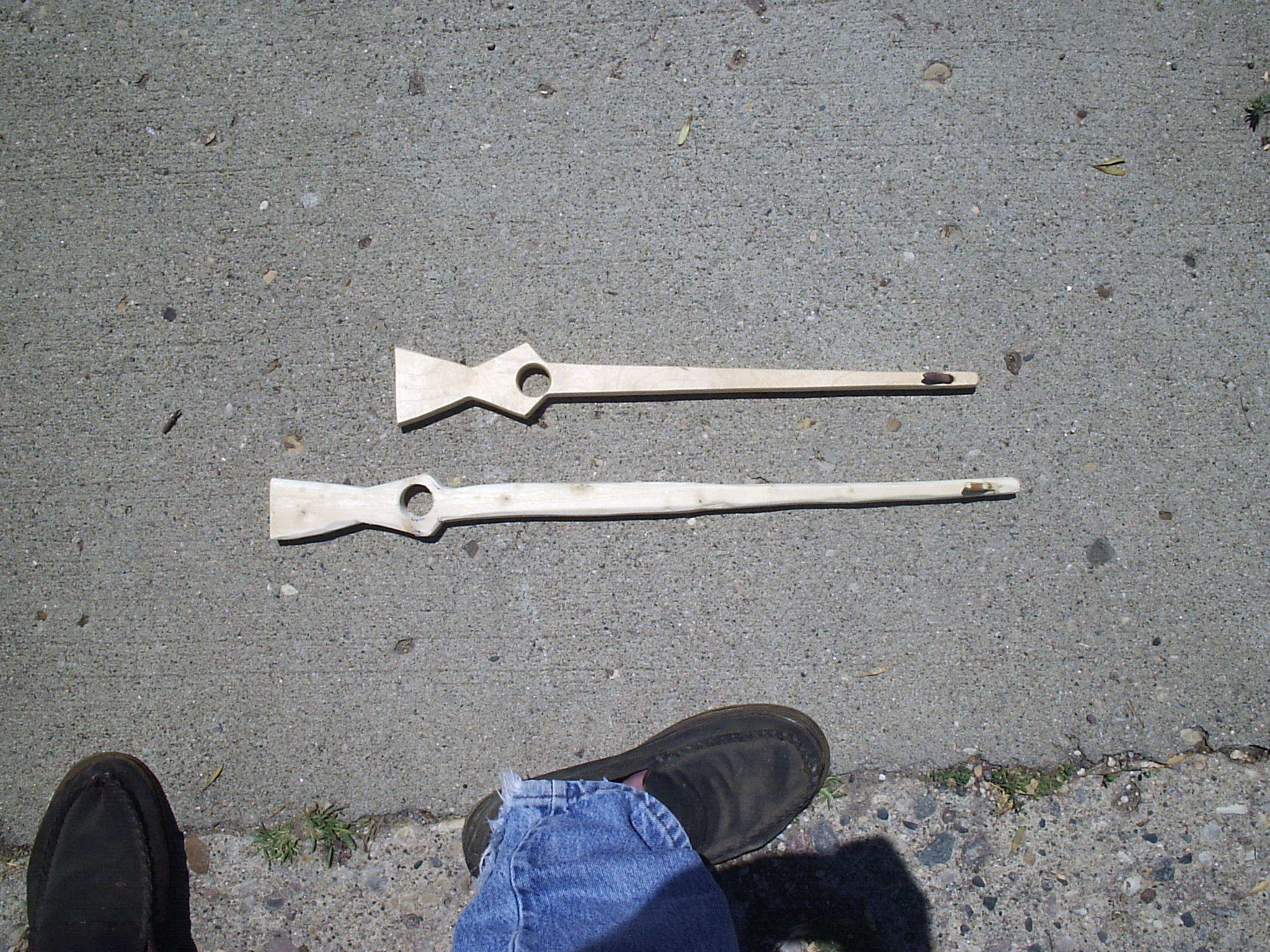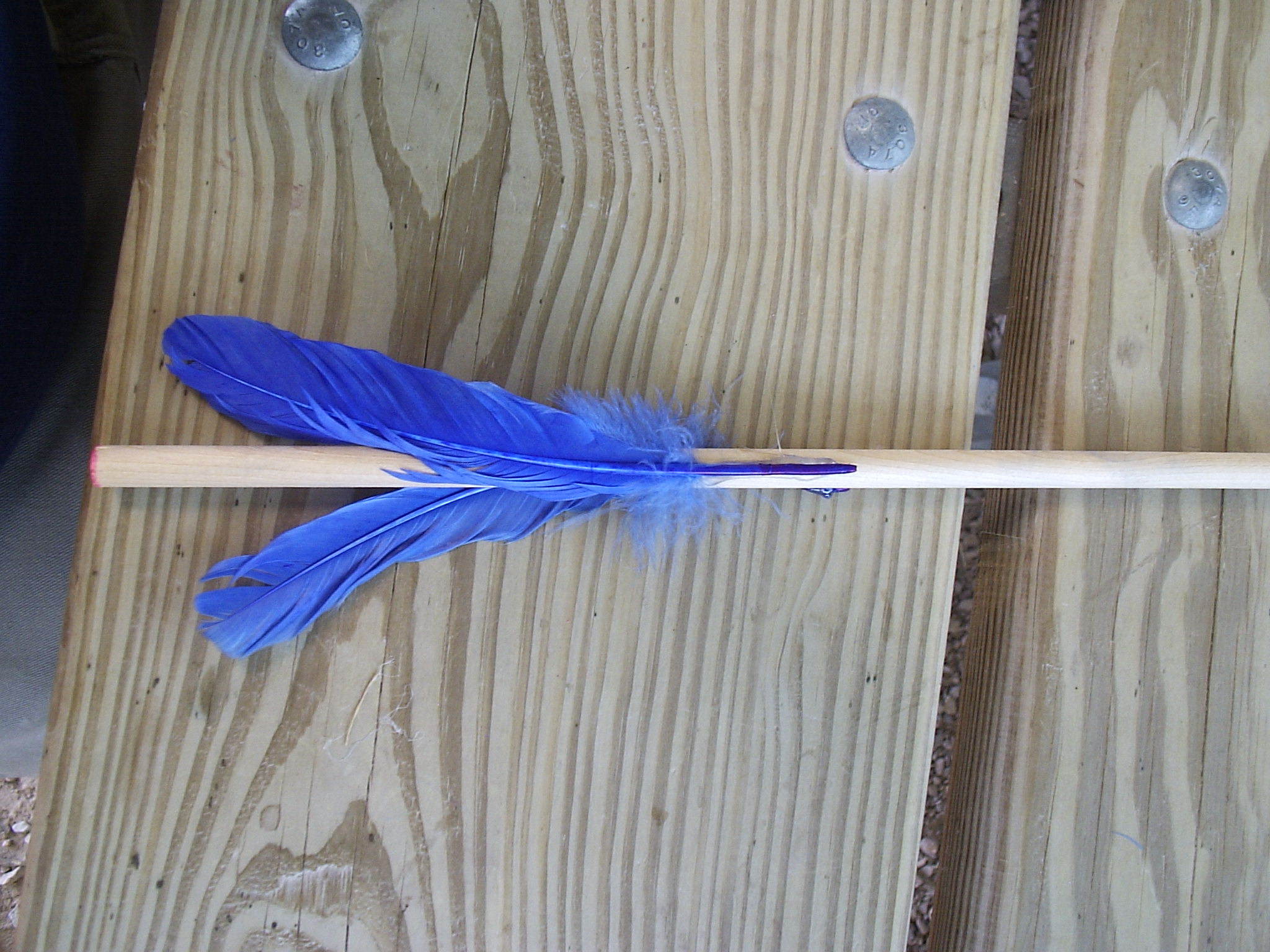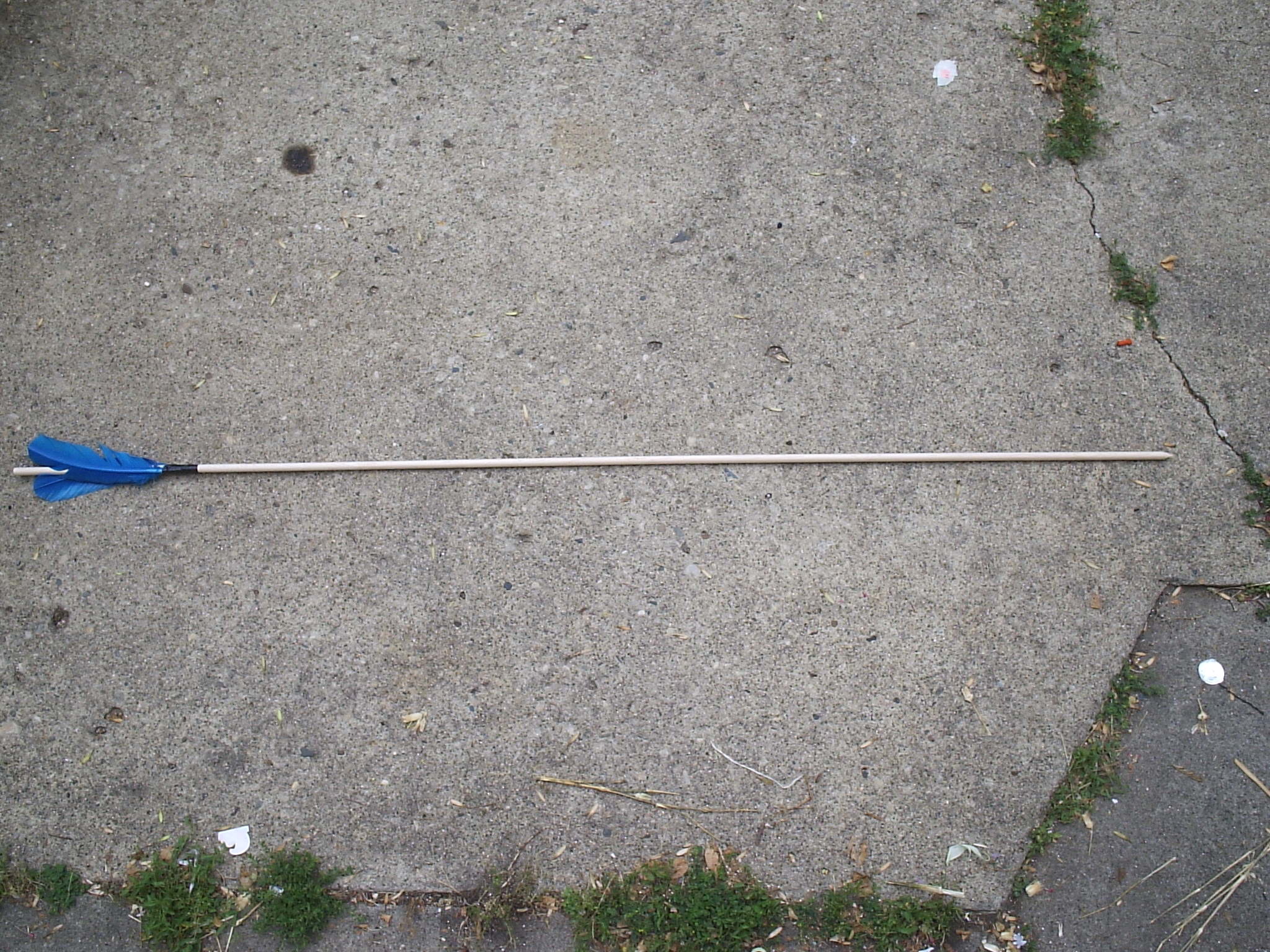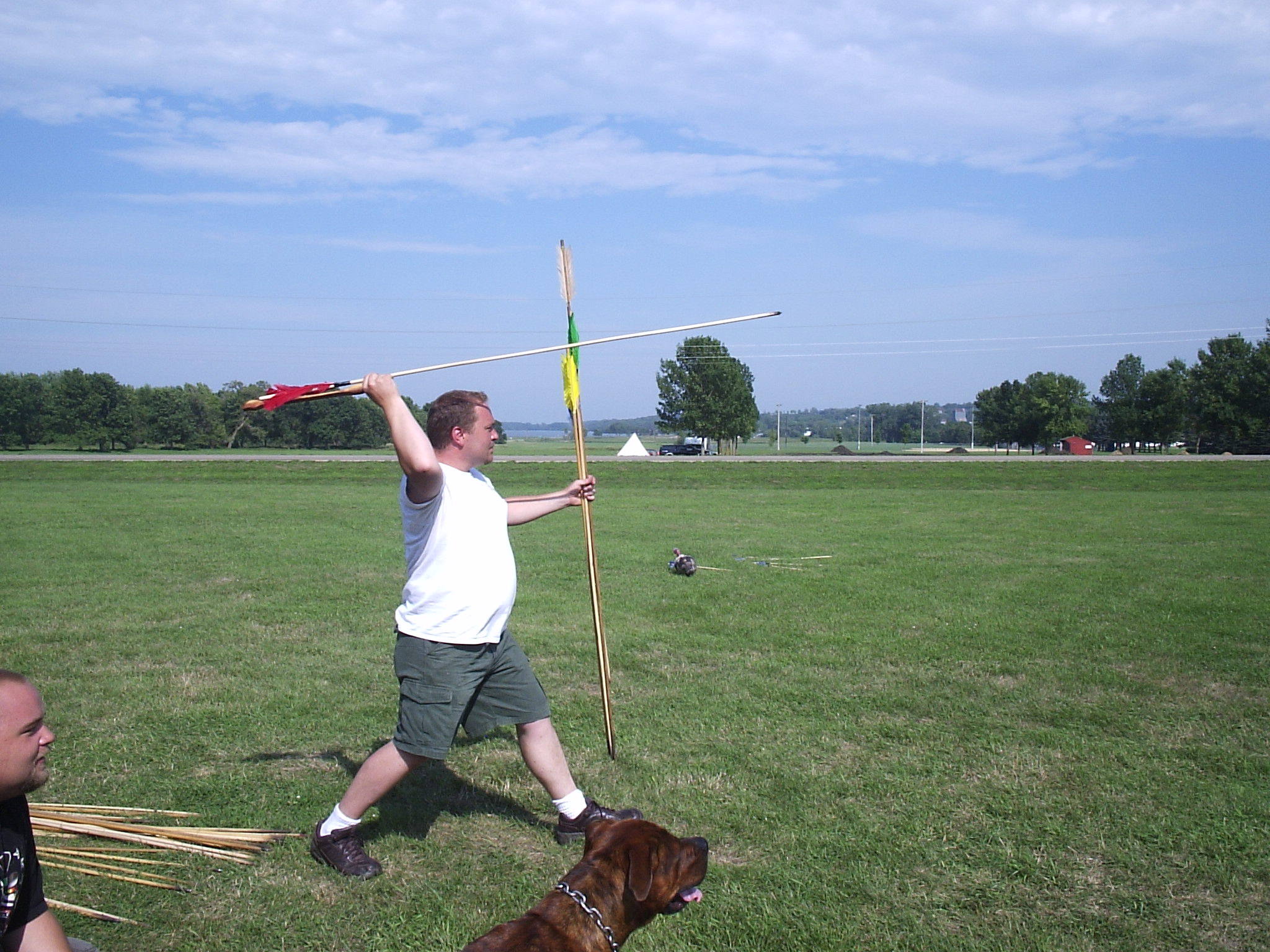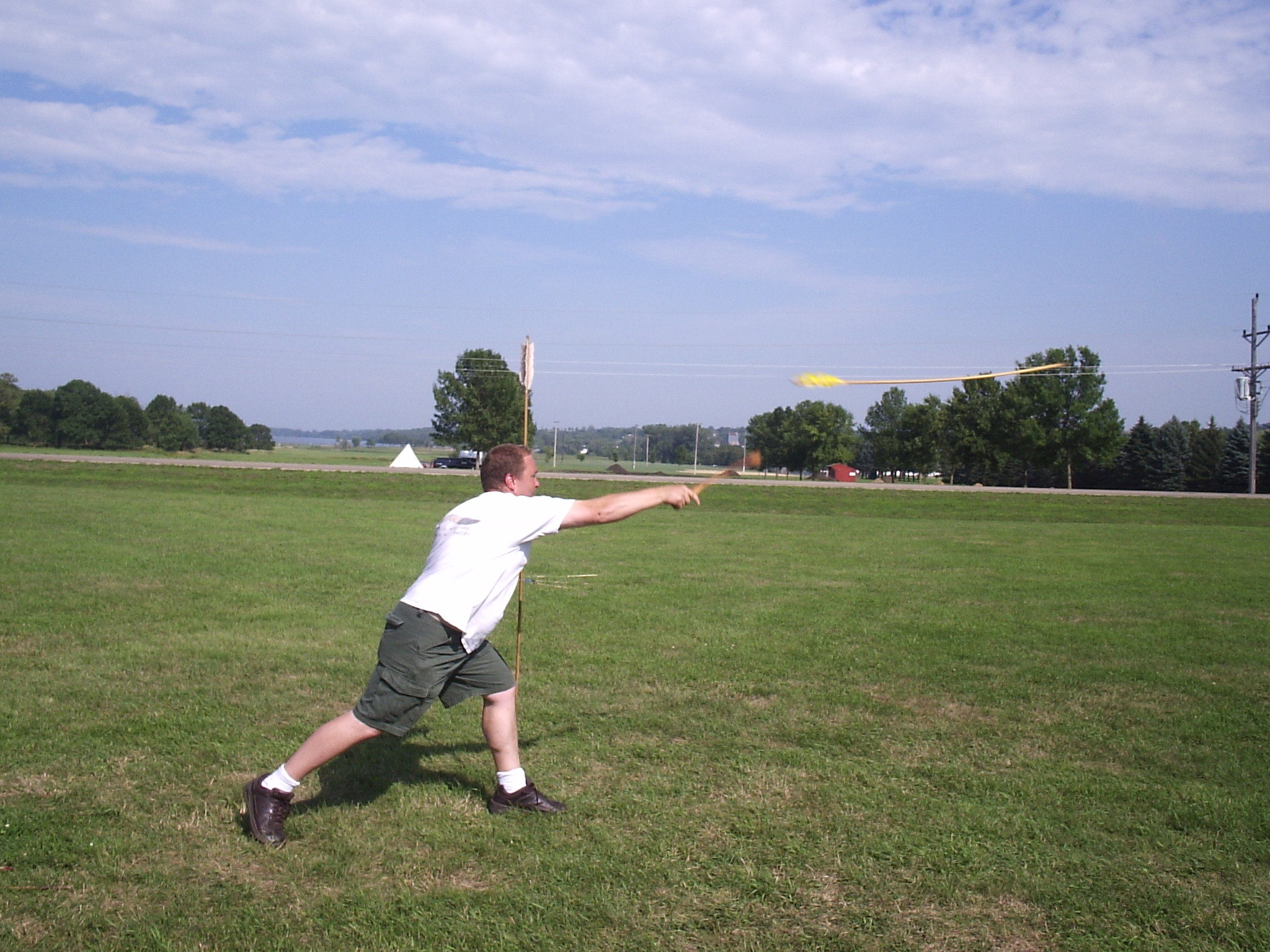Before the bow and arrow there was the atlatl*, or spear-thrower, an ancient weapon that could throw a spear or dart with enough force to penetrate a mammoth’s hide. It was used in North America for about 10,000 years, and used by native Australians and Aleuts as recently as 50 years ago.
It’s easy to make your own atlatl, and throwing with it is fun and very satisfying. Here’s how to make one in the style of the Kuikuru (kwee-KOO-roo) of the Amazon Basin, who still use the spear-thrower today. I’ll also explain how to make darts for it, and how to throw. But never forget that the atlatl is a weapon. It is dangerous. A dart will go through a side of beef. So I’ll go through some precautions as well.
Atlatl Basics
Atlatls range in form from the simple to the very ornate, but they all have the same 3 components: the hook, the grip, and the shaft. The grip is where you hold the atlatl, the hook engages the back of your projectile and propels it, and the shaft connects the two and acts as a lever to multiply the speed of your arm.
A typical length for an atlatl is 18″–24″, although some have been found as short as 6″ (in California) and as long as 48″ (in Australia). Length is mostly a matter of personal preference, but it needs to fit the length of your arm and of the dart you’re throwing.
The simplest atlatl is the first kind ever used — the basic branch atlatl. To make one of these, just find a tree branch that measures about ¾” in diameter and has a smaller branch angling out of it. Cut it just below the smaller branch, clip off the other end about 18″ farther up, and then clip off the smaller branch. Now you have a functioning atlatl. To make it a little easier to handle and control, you can add a finger loop. Just attach a 10″×¾” strip of soft leather about 7″ from the narrow end, looping it around on the side opposite the branch stub.
Atlatl Safety — Where to Throw
- When you throw an atlatl, make sure you have an open area that’s at least 30yds long, with nothing breakable behind it.
- There should never be anyone in front of you when you throw.
- In spite of your aim, the dart can and will go out of control once in a while. It may go off to one side or go farther than you intended. Make allowances for this.
*Most people say “at-LAT-l,” or “AHT-laht-l” but pronunciations vary. Find one you like, get your friends to pronounce it the same way, and you’ll be right.



